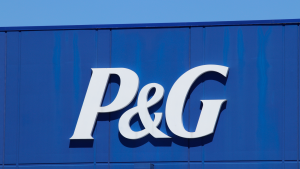
Inflation is moving in the right direction. The Personal Consumption Expenditures (PCE) Price Index, the U.S. Federal Reserve’s preferred measure of inflation, declined to 2.8% in January, its lowest level since February 2021. The inflation gauge is now within spitting distance of the central bank’s 2% annualized target. This has increased expectations that the Fed will begin lowering interest rates this summer.
However, while the inflation data of late has been encouraging, there are some economists who worry aloud that inflation may not yet be tamed and could come roaring back. These economists point to the late 1970s and early 1980s when inflation in the U.S. made several unexpected returns before it was finally tamed by high interest rates.
Should inflation rear-up again, it will surely send the stock market for a loop and impact investors. Here are three places to hide if you think inflation is going to continue to roar.
Berkshire Hathaway (BRK.A, BRK.B)

Few stocks are as secure an investment as Berkshire Hathaway (NYSE:BRK.A , NYSE:BRK.B). The holding company of famed investor Warren Buffett is highly diversified and owns numerous inflation-protected businesses such as insurance companies and railroads. Berkshire Hathaway also has a massive pile of cash that totaled $167.70 billion at the end of 2023. This all makes Berkshire Hathaway safe as houses and able to withstand any adverse economic or market conditions, including inflation.
In terms of its stock performance, Berkshire Hathaway has proven to be an exceptional long-term investment. The more affordable Class B shares have gained 10% year-to-date, are up 26% over the last 12 months, and the share price has doubled in the past five years. Warren Buffett is a careful steward of investors’ capital, never speculates on anything he buys, and views protecting shareholders as sacrosanct. While the company manages a huge portfolio of stocks, they are mostly solid blue-chip names such as Coca-Cola (NYSE:KO) and American Express (NYSE:AXP).
Walmart (WMT)

If inflation does continue to roar and the economy slows, consumers will cutback their spending on discretionary items such as travel and eating in restaurants. However, consumers will continue to spend money on necessary stuff such as groceries and household items, and they will look for discounted prices. This makes Walmart (NYSE:WMT) a great bet should consumer prices continue rising in coming months or we see a sudden, unexpected spike in inflation.
Walmart performed strongly as inflation in America hit a record high of 9.1%. Consumers have graduated to the discount retailer for its low prices and growing selection of groceries. Walmart has expanded into food sales at such an aggressive rate that it is now the largest grocery retailer in the country. The non-discretionary nature of the items sold at Walmart has helped the company’s earnings thrive in the current inflationary environment. Walmart also continues to grow its e-commerce sales with great success.
Procter & Gamble (PG)

Procter & Gamble (NYSE:PG) makes many of the necessary hygiene and household products sold at Walmart and other retailers. Its products include Pampers diapers, Tide laundry detergent, Crest toothpaste and Olay soap. While many consumers will seek out generic versions of Procter & Gamble’s name brand products, a surprising number of people are loyal to its items. This has given Procter & Gamble a surprising amount of pricing power, or the ability to raise prices without losing customers.
The strength of its many brands, and consistent price hikes to help counter the impact of inflation, has led Procter & Gamble to report better profits than Wall Street had expected. Most recently, the company announced fourth quarter 2023 earnings per share (EPS) of $1.84 versus $1.70 that had been forecast among analysts. The company’s sales were slightly below estimates, but that was mostly due to a $1.30 billion charge related to a drop in the book value of its Gillette razor blade business.
PG stock has gained 14% over the last 12 months, including a 7% increase so far in 2024.
On the date of publication, Joel Baglole did not have (either directly or indirectly) any positions in the securities mentioned in this article. The opinions expressed in this article are those of the writer, subject to the InvestorPlace.com Publishing Guidelines.




